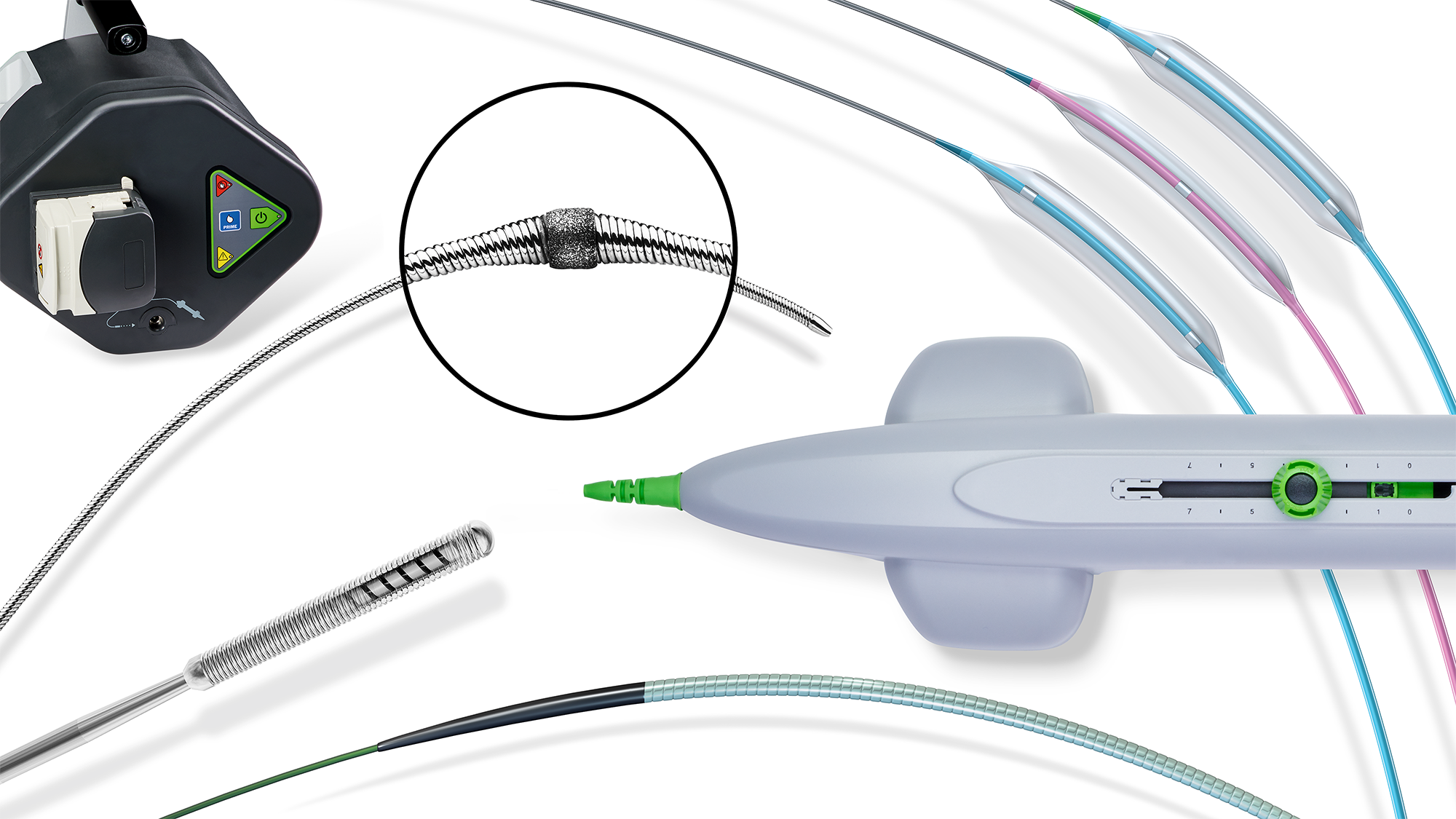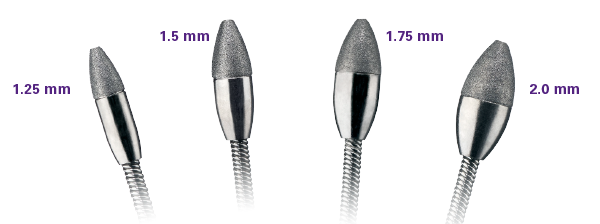Coronary Orbital, Rotational and Laser Atherectomy
Most coronary interventional procedures which are performed to open blockages or narrowings in the coronary arteries utilize a combination of balloon angioplasty and placement of one or more “stents” (metal mesh tubes expanded by a balloon which create a permanent scaffold to hold open an artery in an area of blockage). Results of current generator “drug-eluting” stents are remarkably good with initial success rate of 99% and long-term “restenosis” (re-narrowing) rates typically <5%. In some cases, the plaque creating the blockage is highly calcified (hard plaque rather than the softer, more typical plaque from “atherosclerosis”).
When coronary blockages consist of hard calcific plaque, it may be difficult to impossible advance a stent (or even a balloon) through the blockage. In those cases, it may be necessary “de-bulk” the plaque first. In “orbital” or “rotational” atherectomy, a catheter with a “burr” or a “crown” at the end of it may be used. This football shaped device is covered with a diamond chip coating creating a surface similar to sandpaper. The “burr” or “crown” is spun at high speeds of up to 160,000 RPM to “sand down” the calcified plaque after which balloon angioplasty and stenting may be easily performed to obtain an optimal result with a high rate of expected long-term patency (open artery!).



Two different systems are used by OHVI cardiologists. Rotablator (Boston Scientific Corp.) and DiamondBack (Cardiovascular Systems, Inc.) both are effective at treating calcific plaque. DiamondBack, the newer of the two systems, rotates eccentrically (“orbital”) creating a lumen larger than the size of the crown. The Rotablator system rotates concentrically thus creating a lumen the same size as the “burr” of the device.
Another approach to treating calcific blockages is the use of excimer laser (Philips N.A.). This device uses ultra-violet light at high energy levels delivered through tiny fiberoptic glass fibers within a catheter to vaporize plaque.


